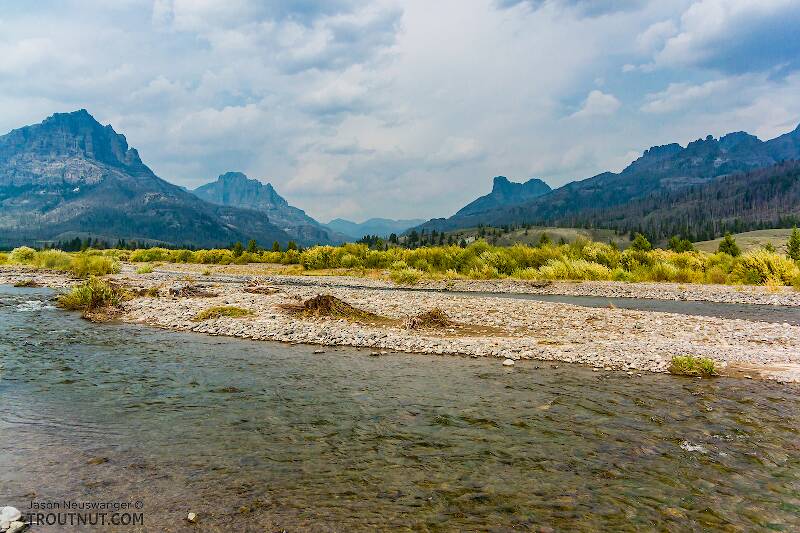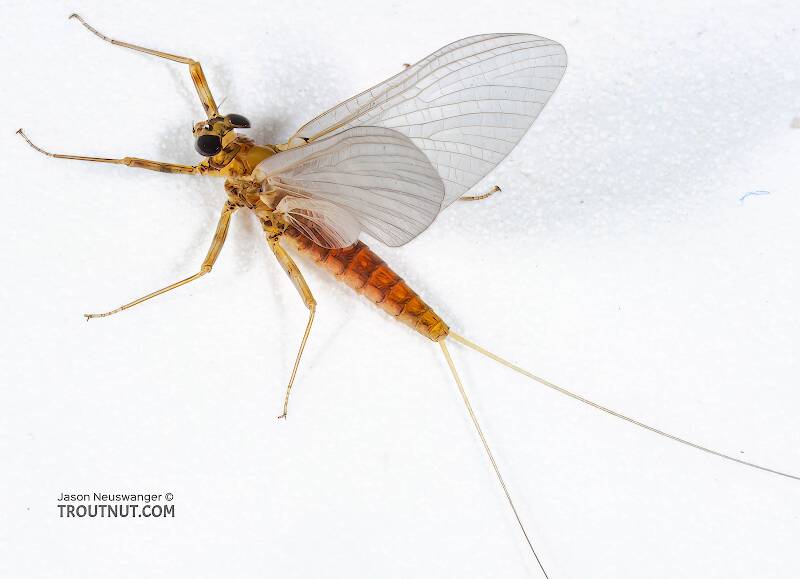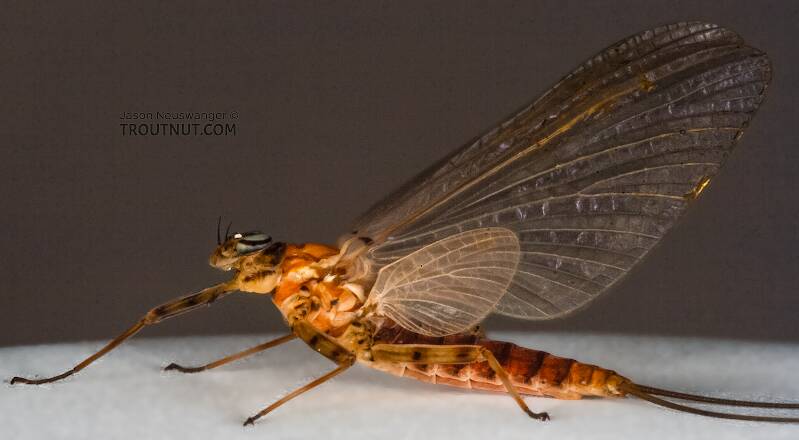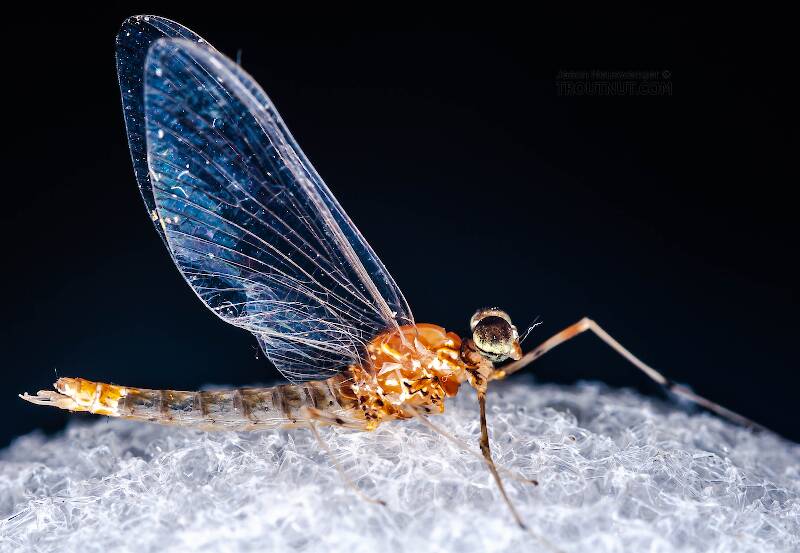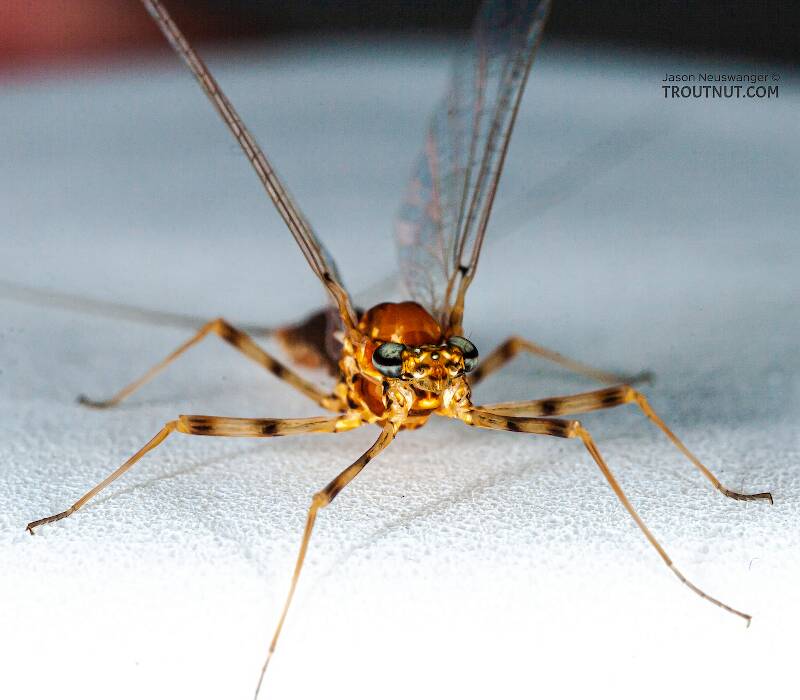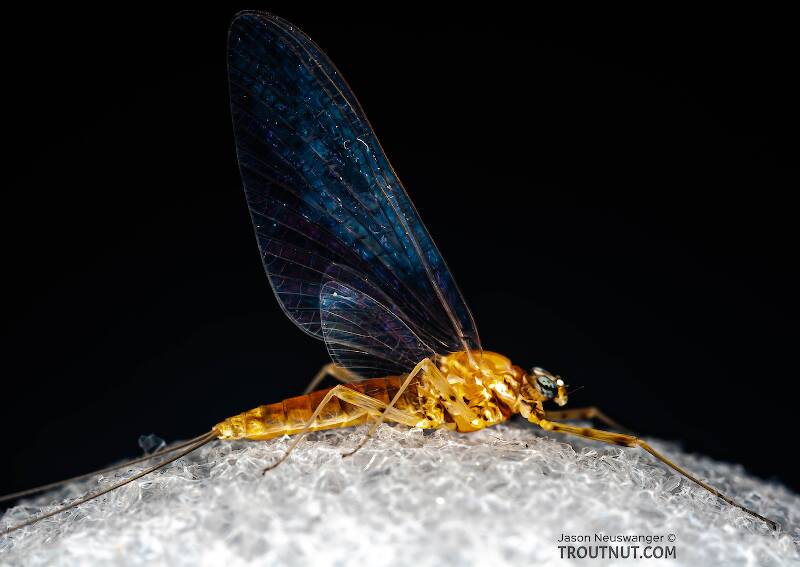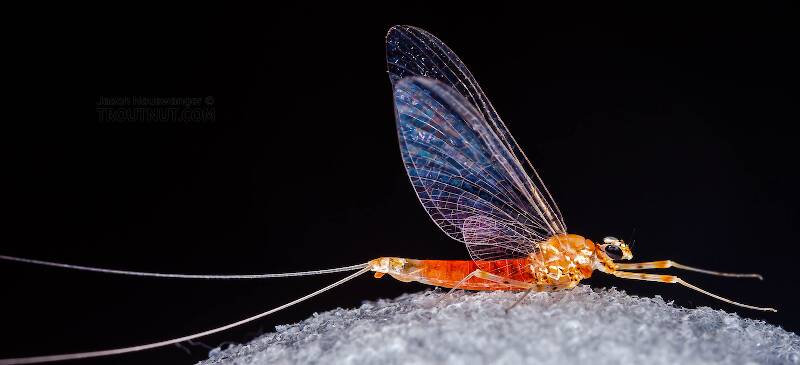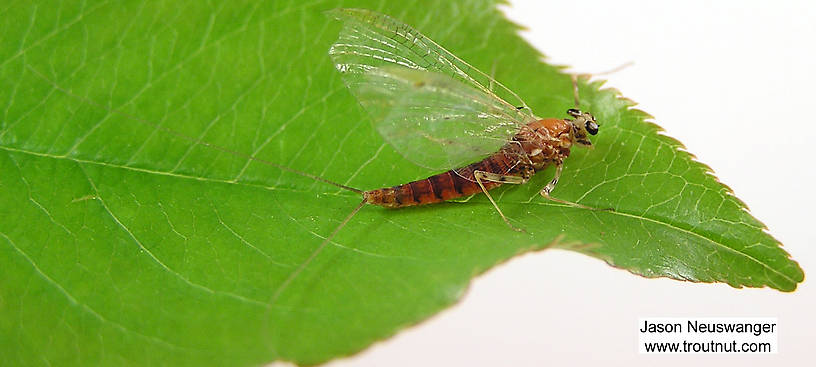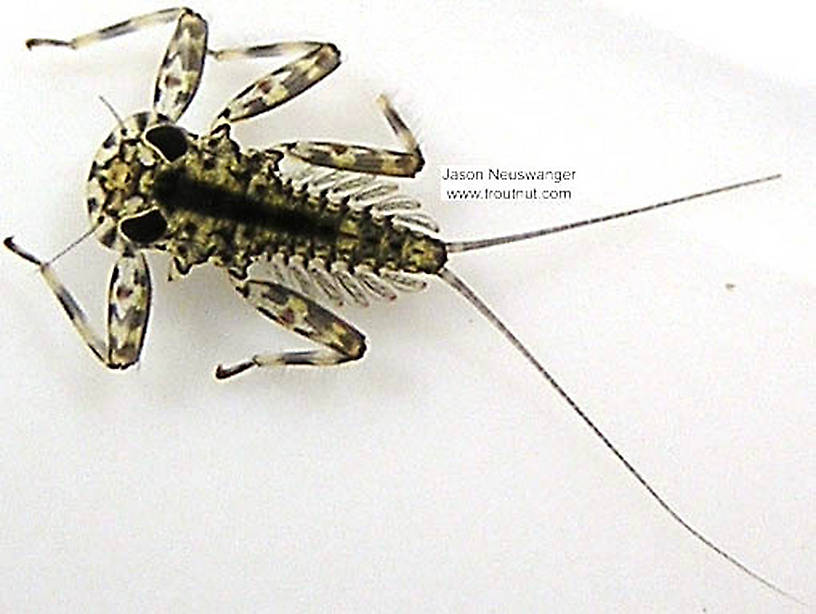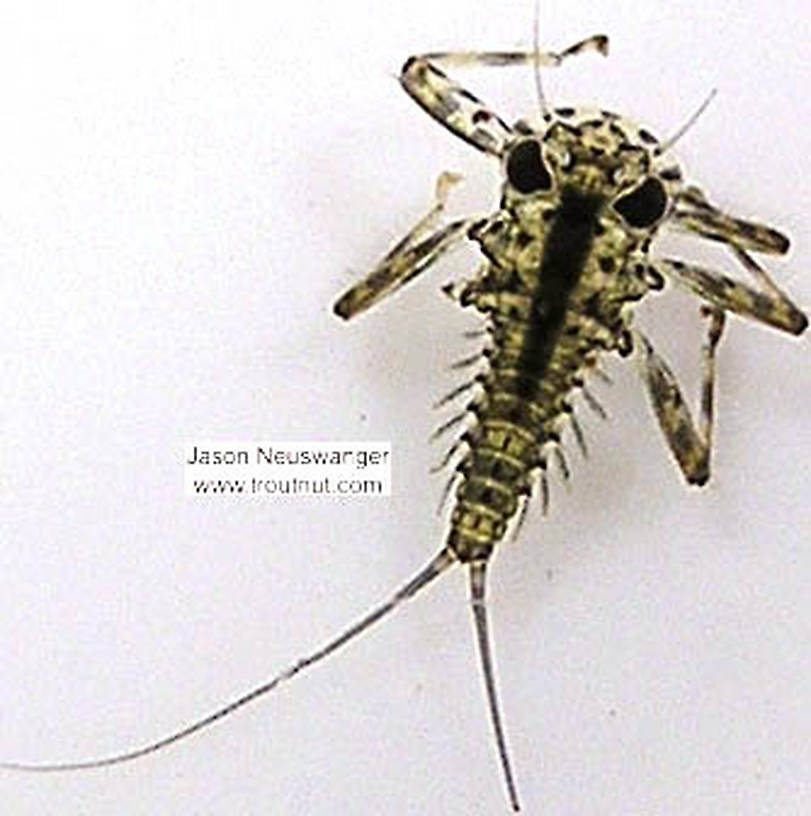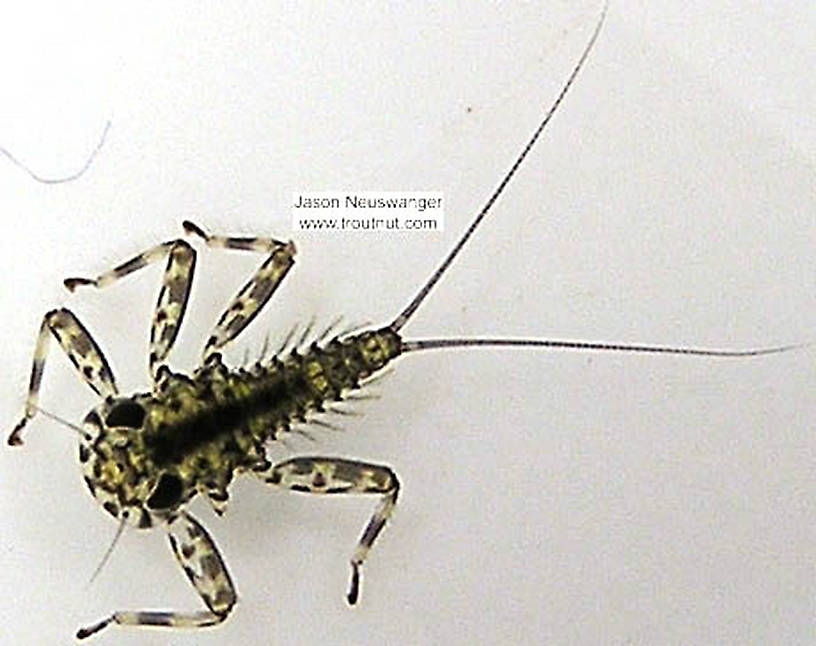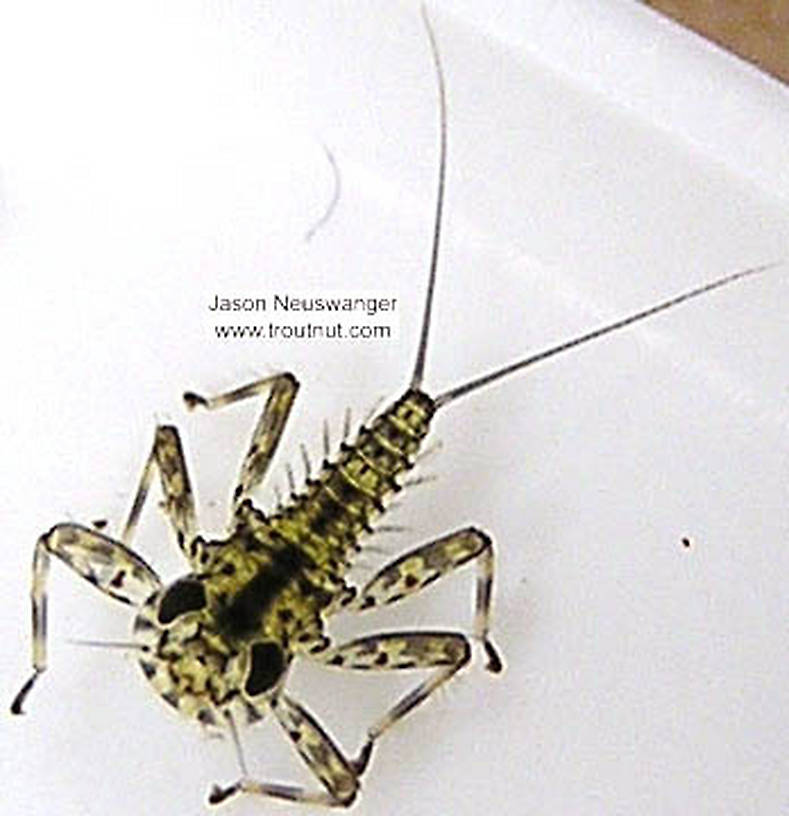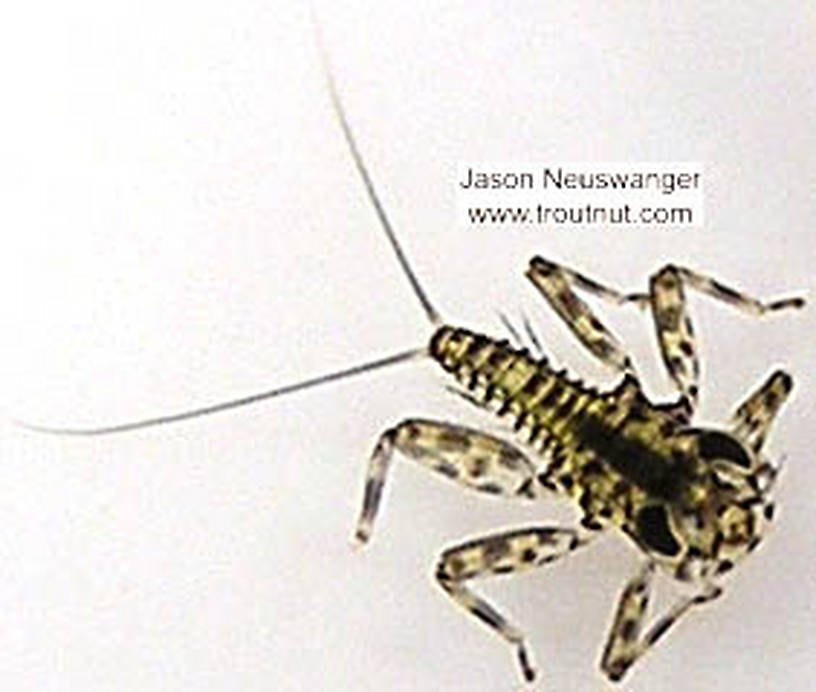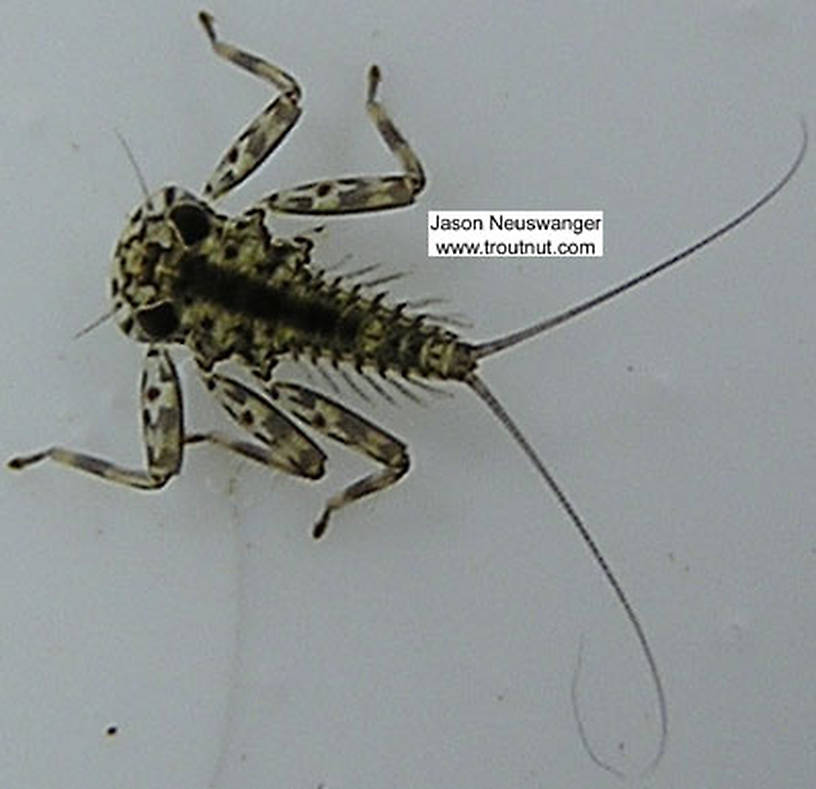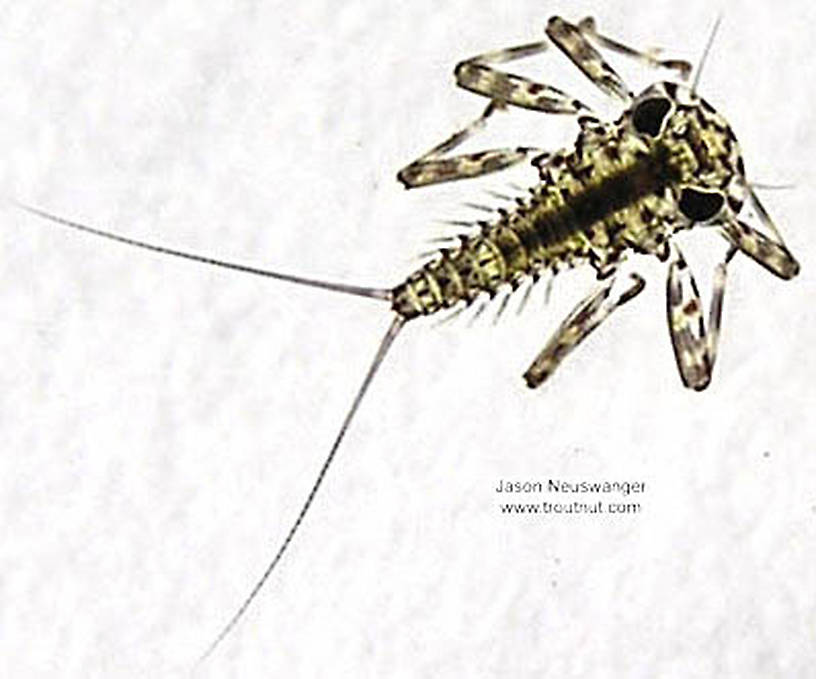
Blue-winged Olives
Baetis
Tiny Baetis mayflies are perhaps the most commonly encountered and imitated by anglers on all American trout streams due to their great abundance, widespread distribution, and trout-friendly emergence habits.


Mayfly Species Epeorus vitreus (Sulphurs)
Where & when
This Midwestern hatch of Epeorus vitreus is a week or two behind the Eastern emergence.I believe I encountered a fishable hatch of this species in the Catskills in early September, but I could not positively identify the flies.
In 61 records from GBIF, adults of this species have mostly been collected during June (41%), July (30%), August (15%), and May (8%).
In 23 records from GBIF, this species has been collected at elevations ranging from 617 to 2625 ft, with an average (median) of 1721 ft.
Species Range
Hatching behavior
Epeorus vitreus emerges underwater. The duns reportedly leave their nymphal shucks while rising to the surface rather than on the bottom.Nymph biology
Current speed: Medium to fast
Substrate: Boulders and gravel
Epeorus vitreus Fly Fishing Tips
At a distance, this species is easily mistaken for other Sulphur species like Ephemerella invaria by the untrained eye who does not look beyond size and color. This is one more reason to quickly collect a dun if you're having trouble matching a Sulphur hatch.Physical description
Most physical descriptions on Troutnut are direct or slightly edited quotes from the original scientific sources describing or updating the species, although there may be errors in copying them to this website. Such descriptions aren't always definitive, because species often turn out to be more variable than the original describers observed. In some cases, only a single specimen was described! However, they are useful starting points.
Male Spinner
Wing length: 8-11 mm
A yellowish white species; venation pale; small lateral spines below apex of penes.
Head yellowish white; eyes olive-green in living insect, a brown band across lower portion; large, contiguous apically. Antennae brown; a brown line from base of antenna to inner margin of eye; median carina brown; ocelli ringed with olive at base. Thorax yellowish white. Posterior margin and postero-lateral corners of pronotum, and an oblique streak on each side, dark brown. Mesonotum yellowish; scutellum dark brown, with a pale area anterior to it, sometimes also lateral pale streaks on each side. Scutellum and lateral areas of metanotum dark brown. Pleura pale yellowish. A purplish brown streak extends downward across coxa from margin of pronotum. Purplish black markings below wing roots and above leg bases, consisting of dark lines and two or three dark spots on each line. Sternum yellowish; in many specimens, a transverse brown band extends across apical portion of mesosternum from point in front of middle leg; a similar dark band may extend across posterior portion of mesosternum from point anterior to hind leg on each side, widening on mesosternum to form a brown patch. Legs whitish; dark brown spot on each coxa; conspicuous dark median spot and apical band on each femur, most distinct on fore femur. Apex of fore tibia and fore tarsal joinings blackish. Basal fore tarsal joint about as long as second, which is subequal to third. Wings hyaline; venation almost colorless, although longitudinal veins may be faintly yellowish; humeral cross vein black next to subcosta. Stigmatic area opaque whitish.
Abdominal segments 2-6, often base of 7, semi-hyaline, whitish. Posterior margins of tergites narrowly brownish; on basal tergites, these bands are wider and extended forward slightly at each end to form irregular lateral patches (not present on all specimens). Traces of lateral brownish streaks on each tergite; median line blackish at posterior margin. Sternites pale, immaculate. Segments 8-10 and apical portion of 7 opaque, yellowish, often with tinge of reddish. Genitalia and tails pale whitish. Penes with small lateral spines below apex on each side (see fig. 107.)
This species is evidently quite variable in color, as we have specimens in which the abdomen is almost wholly white, few dark marks on thorax and no dark ventral thoracic bands; others in which the dark shading of the tergites is quite pronounced, thoracic markings prominent, legs greenish yellow with purplish red markings. We have seen none as dark as Dr. McDunnough has indicated, however. It is closely allied to I. rubidus (now a synonym of Epeorus vitreus), and I. punctatus (now a synonym of Epeorus punctatus), but it is larger than either of these. The latter also lacks the lateral spines on the penes. The paler thorax and relatively smaller genitalia distinguish it from I. suffusus (now a synonym of Epeorus suffusus).
Described as I. rubidus
Body length 8-9 mm, wing length 8-9 mm
Allied to I. humeralis (now a synonym of Epeorus vitreus); slightly smaller, eyes somewhat smaller, longitudinal veins faintly yellow-brown, lateral spines on penes less distinct.
Head pale yellowish; small lateral brown mark on carina, another at each corner of eye. Base of antenna pale, filament dusky at base, tip pale; eyes bright green in living insect, contiguous, but smaller than in I. humeralis. Posterior margin brown at middle line. Thorax pale yellow-brown. Lateral and posterior margins of pronotum brown; brown submedian streaks. Four small dark marks on mesonotum, between wings. Scutellum orange-brown, posterior margin black; lateral areas whitish. Posterior half of metanotum orange-brown, with purplish lateral shading. Pleura pale, with several distinct small purple-black marks on coxae and above each leg. Sternum pale yellowish. Legs pale yellowish; femora rather deeper yellow, each with dark median and apical marks; fore femur slightly dusky. Apex of fore tibia purplish. Basal joint of fore tarus very slightly shorter than second. Wings semi-hyaline; stigmatic area opaque whitish; longitudinal veins faintly yellowish brown; cross veins hyaline, humeral cross vein black next to subcosta.
Abdominal segments 1-7 semi-hyaline, whitish. Posterior margin of each tergite narrowly purplish-black, paler at middle line. Mid-dorsal line, on tergites 3-9, purplish black in posterior half; on 1 and 2, black median dot only. Purplish mark in stigmatic area of each tergite, and traces of dark lateral marks. Segments 8-10 opaque, tergites yellow-brown, sternites paler. Tails white, not darker at joinings. Penes much as in I. humeralis, but lateral spines near apex are much less prominent; second joint of forceps relatively longer than in that species.
Distinguished from I. humeralis as indicated; penes smaller than in I. suffusus (now a synonym of Epeorus suffusus), thorax paler than in that species or I. punctatus (now a synonym of Epeorus punctatus).
Female Dun
Wing length: 6 mm
Note from Troutnut: This description is not of much use, as the species was clearly not well understood at the time the source was written, but it's included here for historical interest.
Described from a female subimago; perhaps not even correctly placed as to genus. Its identity may never be correctly known; at least it cannot be determined at present. We leave the name as that of an undetermined species. Body testaceous (Walker), light brown ochreous according to Eaton. Legs nearly the same color as the body, each femur with a median blackish grey band and light brown at the ‘knee’ (after Eaton). Wings light smoky grey, veins extremely light brown ochraceous (Eaton), testaceous according to Walker. Eaton’s further additions to the original description are: fore tarsus light warm sepia-brown; 6 to 7 basal costal cross veins; 15-17 beyond the bulla, all simple and straight.
Description from GBIFthe Global Biodiversity Information Facility
Source: Contribution to the taxonomy of Eastern North American Epeorus Eaton (Ephemeroptera: Heptageniidae)
Head: Head capsule subrectangular, brown with pair of pale triangular spots on anteromedian margin and large pale spot on anterolateral margin (Fig. 1). Labrum (Fig. 2) dorsally with two long simple setae laterally and two or three long simple setae medially, ventrally with many long simple setae near lateral margin, approximately 2.0 X wider than long. Mandibles as in Figs. 3 and 4. Maxillae (Fig. 5) with single fimbriate seta at base of cluster of apical spines; posterior margin of first segment of palp with sparse row and apical cluster of sharp robust setae. Thorax: Coloration light brown with pale markings. Pronotum with transverse ridge. Femora (Fig. 6) with subdorsal row of long simple setae and dorsal row of three or four short robust setae; anterior face with both fine and paddle shaped robust setae, more numerous basally; ventral margin with fine setae and few robust setae basally; apices with dorsal projection bluntly pointed (Fig. 7); color brown with pale markings and dark spot centrally. Tibiae pale with basal and medial brown bands. Tarsi brown. Tarsal claws with four or five denticles on inner margin. Abdomen: Terga light brown with various pale markings and median row of long fine setae; tergum 1 mostly light brown; terga 2 – 10 with submedian pair of dark spots with dark shading extending posteriorly (except tergum 6), and laterally with oblique dark mark surrounded by pale area. Terga 2 – or 3 – 7 with minute posteromedian tubercle. Posterolateral spines short, with dorsal (outer) and ventral (inner) pair subequal in length (Fig. 8). First pair of gill lamellae (Fig. 9) not enlarged anteriorly; lamellae of gills 2 – 6 as in Fig. 10; lamellae of gills 7 not folded longitudinally. Cerci with small spines at articulations and dorsal row of fine setae.
Specimens of the Mayfly Species Epeorus vitreus
1 Male Dun
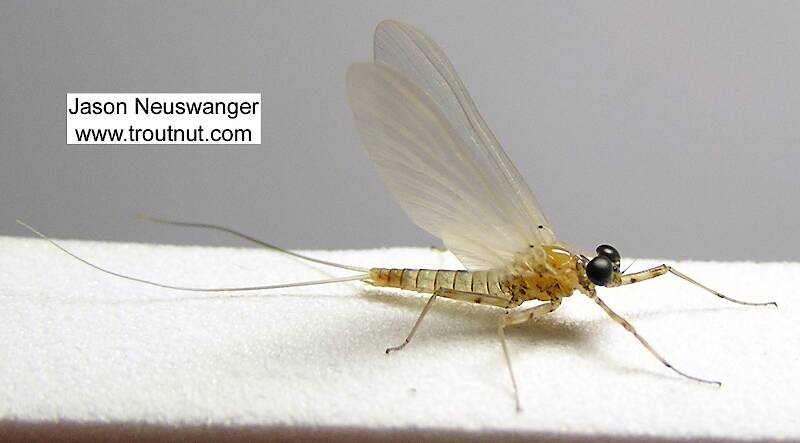
Its identification is really up in the air. It might be a late-season vitreus dun but it may very well be one of the more obscure species in that genus.
2 Female Duns
1 Male Spinner
4 Female Spinners
7 Nymphs
Start a Discussion of Epeorus vitreus
References
- Arbona, Fred Jr. 1989. Mayflies, the Angler, and the Trout. Nick Lyons Books.
- Caucci, Al and Nastasi, Bob. 2004. Hatches II. The Lyons Press.
- Fauceglia, Ted. 2005. Mayflies . Stackpole Books.
- Knopp, Malcolm and Robert Cormier. 1997. Mayflies: An Angler's Study of Trout Water Ephemeroptera . The Lyons Press.
- Leonard, Justin W. and Fannie A. Leonard. 1962. Mayflies of Michigan Trout Streams. Cranbrook Institute of Science.
- Needham, James G., Jay R. Traver, and Yin-Chi Hsu. 1935. The Biology of Mayflies. Comstock Publishing Company, Inc.
- Schwiebert, Ernest G. 1955. Matching the Hatch. MacMillan Publishing Company.
Mayfly Species Epeorus vitreus (Sulphurs)
Species Range
Common Names
Resources
- NatureServe
- Integrated Taxonomic Information System
- Global Biodiversity Information Facility
- Described by Walker (1853)

